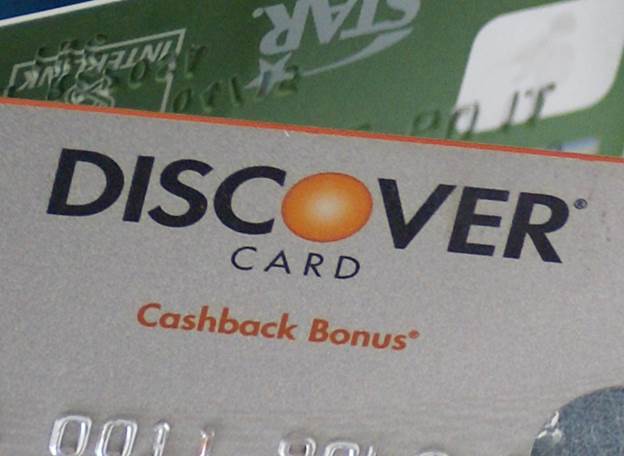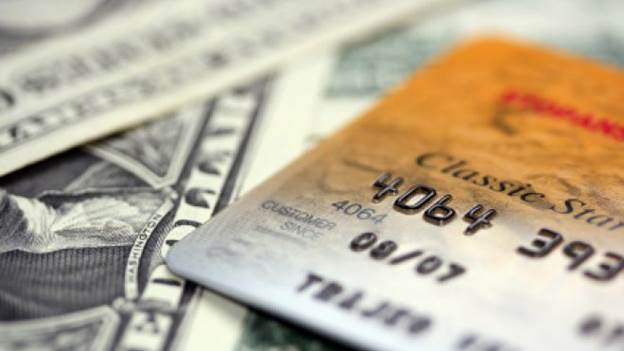Consumers Union, the advocacy arm of us,
supported reform that led to the so-called Schumer Box (a required summary of
the costs of a credit card in promotional materials, named after Sen. Charles
Schumer, D-NY., who as a congressman championed the legislation) and the
passage of the Card Act of 2009, which outlawed certain abusive practices by
issuers. But today’s confusing deals on all types of cards suggest that issuers
need to make their deals more understandable to the typical consumer not just
for those with math degrees.

Be
sure to read all of the fine print on any offer you’re considering.
Until then, be sure to read all of the fine
print on any offer you’re considering. Here’s what to watch for:
Spending
tiers:
Some rewards cards require you to spend a
certain amount to get the advertised perks. Watch for phrases such as “up to”
in card offers – that may mean you’ll get the highest rewards only after
spending thousands in a single year.
Hidden
caps.
Some cards, including some gas cards,
reduce the reward percentage after you’ve spent a set amount.
Expiration
dates
Check for them on rewards, especially with
travel cards, because it often takes a long time to get enough points for a
ticket.

Check
for them on rewards, especially with travel cards
Missed-payment
penalties.
Some cards take away your month’s rewards
if you miss a payment, and they might charge a fee to reinstate them. The
Discover More card, for example, takes away all of your points if you miss two
payments in a row.

The
Discover More card takes away all of your points if you miss two payments in a
row.
Changes
in terms.
Avoid surprises by reading the notices that
come with your monthly bills for changes in fees, rates, credit limit, or
rewards programs.
Did you know?
Where
to complain
If your credit-card issuer isn’t solving
your problem-a billing dispute, say, or trouble closing your account- submit a
complaint to the Consumer Financial Protection Bureau (consumerfiance.gov). The
agency gives issuers 60 days to resolve and close most complaints before it
takes further enforcement action.
Should you ditch your unwanted cards?
Getting new cards and closing old accounts
might affect your credit score if done wrong. Here’s how to pare your card
collection without damage:
Contrary to popular belief, having a lot of
credit cards is not detrimental to your score. That’s because one component of
the FICO credit-scoring formula is the ratio of your balances to your credit
limits. The more available credit you have relative to the amount you charge
each month, the higher your score is likely to be. Don’t use more than 50
percent of your available credit or your score will suffer.

The
length of your credit history makes up 15 percent of your score, which is why
the common advice is to hold on to your oldest credit cards, even if you don’t
use them
The length of your credit history makes up
15 percent of your score, which is why the common advice is to hold on to your
oldest credit cards, even if you don’t use them. But credit bureaus usually
leave closed accounts on your file for 10 years, so your score will continue to
reflect your payment history on your closed account.
Bottom
line.
You can cancel your old cards without
hurting your credit score. To close an account, pay off any balance and write
to the issuer that you want to close the account. Ask for written confirmation
that the account was “closed by customer” and tell the issuer to report that
information to the credit bureaus. Verify that by getting a copy of your credit
report free at annaualcreditreport.com
The right card can maximize rewards and minimize costs
The Consumer Reports Money Lab analyzed 53
mass-market credit cards to see which ones make the most sense for typical
creditworthy users with varying needs. Cards are listed in order of best
rewards or lowest cost for the first year.
|
Card
|
APR on purchases
|
Cumulative rewards earned over 12//24/36
months (1)
|
Selected features
|
|
Cash rewards: good deals for a family
spending $400 a month on gas, $600 on groceries, and $1,000 elsewhere.
|
|
American Express Blue Cash Preferred
|
0% for 12 months, 17.24% to 22.24% after
|
$770/$1,390/$2,010
|
6% back at supermarkets, 3% back on gas
and at department stores, 1% back everywhere else. $75 annual fee.
No-annual-fee version pays lower rewards. $150 bonus after spending $1,000 in
first 3 months.
|
|
Fidelity Rewards American Express
|
13.99%
|
$480/$960/$1,440
|
2% back; points can be redeemed for
merchandise or cash, or deposited into a Fidelity IRA, 529 college-savings
plan, or brokerage account.
|
|
Capital One cash Rewards
|
0% for 12 months, 12.0% to 20.9% after
that
|
$460/$820/$1,180
|
$100 sign-up bonus after spending $500 in
the first 3 months. 1% back on all purchases; 50% cash bonus at the end of
the year, which equates to 1.5% back on all purchases. No foreign-transaction
fee.
|
|
Travel cards: Good deals for a traveler
who spends $2,000 a month, 75% on travel-related expenses, and wants to
redeem points with any airline
|
|
Chase Sapphire Preferred
|
15.24%
|
$850/$1,200/$1,560
|
2 points per $1 spent for travel and
dining; 1 point per $1 spent elsewhere. 7% bonus on points annually. 40,000
bonus points after you spend $3,000 in first 3 months (equivalent to $500
when redeemed through Chase’s travel agent). $95 annual fee waived the first
year. No foreign-transaction fees. No –annual-fee version pays lower rewards.
|
|
American Express Blue Sky Preferred
|
0% for 12 months, then 17,24% to 22.24%
|
$760/ $1,320/$1,880
|
2 points per $1 spent on dining, hotels,
and car rental; 1 points per $1 spent on flights and elsewhere. 15,000 bonus
points (equal to $200) after spending $1,000 within first 3 months. $75
annual fee. $100 annual airline allowance for baggage fees, leg-room
upgrades, and in-flight purchases. No-annual-fee version pays lower rewards.
|
|
Capital One Venture Rewards
|
13.9% to 20.9%
|
$580/$1,000/$1,420
|
2 points per $1 spent; 10,000 bonus
points (equal to $100) after spending $1,000 in first 3 months. $59 annual
fee waived the first year. No-annual-fee version pays lower rewards but
includes 0% purchase APR for 1 year and 10,000 bonus points. No
foreign-transaction fee for either version.
|
|
Card
|
APR on purchases
|
Transfer fees and interest costs over
12/24/36 months (2)
|
Selected features
|
|
Balance-transfer/ Low-rate cards: Good
deals for consumers who want to transfer a balance of $10,000
|
|
Chase Slate
|
0% on balance transfers and purchases for
15 months, 11.99% to 21.99% after that
|
0$/$910/$2,110
|
The cheapest balance-transfer card,
provided you pay off your balance within 15 months. No balance-transfer fee
on balances transferred within 60 days of account opening; 3% transfer fee
applies on later transfers.
|
|
Citi Diamond Preferred Card
|
0% for 18 months, then 11.99% to 21.99%
|
$300/$910/$2,110
|
0% on balance transfer for 18 months. 3%
balance-transfer fee
|
|
PenFed Promise Visa (3)
|
7.49% intro APR for 36 months. Switches
to prime rate after (currently 9.99%)
|
$500/$1,000/$1,500
|
4.99% on balance transfers for life makes
this the best card if it’ll take you more than two years to pay off your
balance. No balance-transfer fee
|
Calculations are for comparative purposes
only and assume a high-credit score individual. Your actual rewards and costs
may vary. Excludes cards not available to the general public,
airline-affiliated cards, those requiring enrollment in quarterly bonus
categories for highest rewards, points cards that don’t convert points to cash
or cash equivalents, and travel cards that don’t allow bookings on multiple
airlines. Data current as of August 2012.
(1) Rewards take into account up-front
bonuses as well as annual fees.
(2) Cumulative cost estimates assume the
balance remains constant at $10,000 over the different time periods and uses
the same billing profile across all cards.
(3). Membership in Pentagon Federal Credit
Union required.